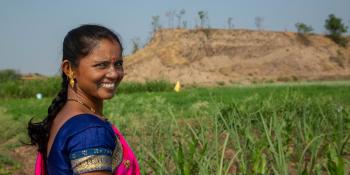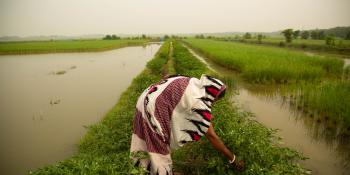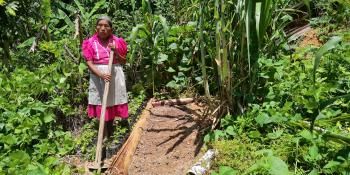Improved rainfall thresholds for index insurance in India

Summary
Weather shocks can trap farmers and households in poverty. At the same time, the risk of such shocks occurring often discourage farmers from trying out innovations, such as new types of seed or different technologies, which could increase productivity and resilience. Conventional crop insurance relies on the direct assessment of an individual farmer’s loss or damage, but carrying out field assessments in developing countries is often time consuming and costly. Weather index insurance, on the other hand, is based on objective thresholds such as rainfall amounts or temperatures measured at defined locations. Based on the requirements of the crop being insured, a threshold is selected above or below which payouts are made. This means it is not necessary to assess every insured farmer’s loss. In this way, weather index insurance enables farmers to insure their crops against weather risk in areas where traditional agricultural insurance is not available.
In India, weather index insurance was introduced to farmers in 2003. In 2007, the national government adopted it as an alternative to crop-yield index insurance. By 2012, up to 12 million farmers, growing 40 different crops over 15 million hectares, were insured against weather-related losses. Despite its potential, weather index insurance can fail to benefit farmers if the information available to the insurance company does not reflect the reality in the fields. CCAFS has played a critical role in improving agricultural insurance products to meet the needs of farmers by enriching the information that the Agriculture Insurance Company of India (AIC) uses for weather index insurance. This involved strategic use of spatial weather, soil and crop management data together with regionally validated crop modelling work to identify critical rainfall thresholds for different crop growth stages. These thresholds are now used by the Agricultural Insurance Company of India (AIC) to develop rainfall index insurance schemes for rice and other crops. These schemes led to the protection of more than 50,000 rain-fed farmers from the vagaries of rainfall in one crop season alone, and further expansion is envisaged. As millions of India’s farmers increasingly experience the impacts of climate change, this type of insurance will become a lifeline for many of them.
Key facts
Weather index insurance enables farmers to insure their crops against weather risk in areas where traditional agricultural insurance is not available.
CCAFS made strategic use of spatial weather, soil and crop management data together with regionally validated crop modelling work to identify critical rainfall thresholds for different crop growth stages. These thresholds are now used by the Agricultural Insurance Company of India (AIC) to develop rainfall index insurance schemes for rice and other crops.
More than 50,000 rain-fed farmers insured against the vagaries of rainfall in one crop season alone.
Lessons: key elements of success
Effective engagement with the private sector and efforts to address knowledge needs of the sector, with clear and quantifiable development outcomes.
Related research outputs
de Nicola, F., Hill, R.V., Carter, M., Choularton, R., Hansen, J., Osgood, D., (2011). Index insurance for managing climate-related agricultural risk: toward a strategic research agenda. Workshop Report. International Food Policy Research Institute (IFPRI). Washington, DC, USA.


